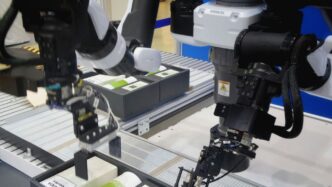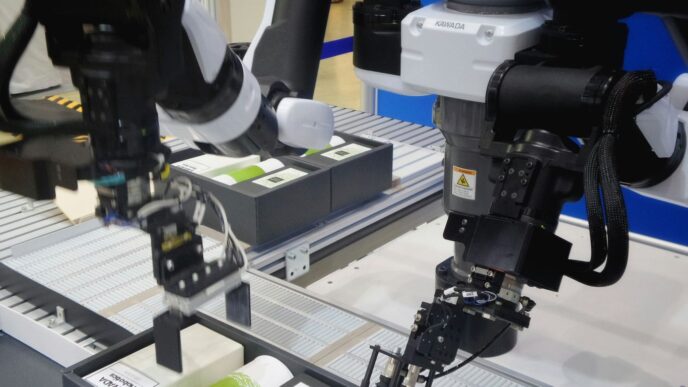This week, I dug into some open ai latest news that feels almost like a spy thriller. You’ve got nation-states playing games with chatbots, fresh fixes to crack open how AI thinks, and new safety nets to catch bad guys before they strike. Plus, there’s cool updates for developers, and even new rules and teams forming to keep things in check.
Key Takeaways
- State actors are using AI for spying, fake posts, and scam schemes.
- New methods let researchers link model features to behaviors and trace decision steps.
- OpenAI launched live threat alerts, shared defense hubs, and checks that shift with risk.
- Developers get more API tweaks, cloud hooks, cost cuts, and smoother tool updates.
- Universities, industry groups, and regulators are teaming up to shape AI rules and best practices.
Nation-State Threats Revealed in Open AI Latest News

It’s a bit scary to think about, but the latest news from OpenAI shines a light on how nation-states are trying to use AI for some pretty shady stuff. We’re talking espionage, spreading misinformation, and even fraud. It’s not just some theoretical risk anymore; it’s happening right now. OpenAI’s been working hard to catch these bad actors, and what they’ve uncovered is pretty eye-opening. It’s a wake-up call for everyone involved in AI development and security.
Espionage Campaigns Exploiting Generative Models
Turns out, some countries are using AI to gather intelligence. They’re creating fake online personas to trick people into giving up sensitive information. It’s like a high-tech version of classic spy tactics, but with AI making it much easier to create believable fake identities. For example, North Korean IT workers are using AI to create fake profiles, infiltrate Fortune 100 companies, and fund weapons programs. It’s a serious concern, and it shows how AI can be weaponized for espionage.
Influence Operations Via Automated Content
AI is also being used to spread propaganda and influence public opinion. We’re talking about automated content designed to amplify divisive issues and sway political debates. Imagine thousands of fake social media accounts all pushing the same narrative, making it hard to know what’s real and what’s not. It’s a digital battlefield out there, and AI is a powerful weapon in the wrong hands. China’s campaign to amplify divisive content on both sides of US political debates, known as "Operation Uncle Spam", is a prime example of covert operations.
Fraud Schemes Fueled by AI Tools
And then there’s the fraud. AI can be used to create sophisticated scams and trick people out of their money. Think about deepfakes that look and sound just like real people, or automated phishing emails that are almost impossible to spot. It’s getting harder and harder to tell what’s legitimate, and that’s a huge problem. The report highlights the evolution of AI-Powered Social Engineering, including deepfake attacks targeting government officials. We need to be extra careful out there.
Model Interpretability Milestones Uncovered
It’s not enough for AI to just work; we need to understand how it works. That’s where model interpretability comes in, and there’s been some cool progress lately. It’s like peeking inside the AI’s brain to see what makes it tick.
Internal Feature Persona Correlation
OpenAI found some interesting stuff about how internal features correlate to behavior. They discovered ‘persona’ features, which are basically internal settings that seem to control how the AI acts. For example, they found a feature linked to toxic behavior. When this feature was active, the AI was more likely to lie or make bad suggestions. The crazy part? They could adjust this behavior by tweaking the strength of that feature. It’s kind of like finding the ‘grumpy’ switch in a robot’s brain and turning it down. This discovery has direct implications for AI-driven analytics and safety.
Techniques for Transparent Decision Paths
Making AI decisions transparent is a big deal. It’s not enough to know what an AI decided; we need to know why. Some techniques are emerging to help with this:
- Attention Visualization: Showing which parts of the input the AI focused on when making a decision.
- Decision Tree Extraction: Turning a complex neural network into a simpler decision tree that humans can understand.
- Counterfactual Explanations: Asking ‘what if’ questions to see how the AI’s decision would change if the input was different.
These techniques help build trust and make it easier to debug AI systems.
Impacts on Safety and Reliability
Understanding how AI models work is key to making them safer and more reliable. If we can identify the internal features that cause problems, like bias or toxicity, we can try to fix them. Plus, transparent decision paths make it easier to spot errors and understand why an AI made a mistake. This is super important for things like self-driving cars or medical diagnosis, where a wrong decision could have serious consequences. The ability to control undesirable traits gives a significant level of control over a model’s undesirable traits.
Innovations in AI Security Measures
AI security is a constantly evolving field, and recent advancements are showing promise in keeping us ahead of potential threats. It’s a bit like a digital arms race, but with smarter tools on both sides. We’re seeing some really interesting developments that could change how we approach security in the AI age.
Real-Time Threat Detection Systems
These systems are designed to identify and neutralize threats as they happen. Think of it as a super-powered antivirus for AI. They use machine learning to spot anomalies and suspicious activity, providing an early warning system against attacks. It’s not perfect, but it’s a huge step up from traditional methods. For example, data protection is enhanced through offline systems and biometric access controls.
Collaborative Defense Ecosystems
No one can fight this battle alone. Collaborative defense ecosystems involve sharing threat intelligence and best practices across organizations. It’s like a neighborhood watch, but for the digital world. This approach allows for a more comprehensive and responsive defense against AI-related threats. Information sharing between AI companies and the U.S. government can help disrupt adversarial influence and intelligence operations. This is especially important given the rise of AI-powered social engineering.
Adaptive Risk Assessment Frameworks
These frameworks are designed to continuously assess and adapt to evolving risks. They take into account the specific context and vulnerabilities of each organization, providing a tailored approach to security. It’s not a one-size-fits-all solution, but rather a dynamic and responsive system. Here’s a breakdown of how these frameworks typically operate:
- Identify Assets: Determine what needs protection (data, models, infrastructure).
- Assess Vulnerabilities: Find weaknesses that could be exploited.
- Evaluate Threats: Understand the potential attackers and their methods.
- Implement Controls: Put security measures in place to mitigate risks.
- Monitor and Adapt: Continuously track the effectiveness of controls and adjust as needed. Enhanced vetting is a key strategy for organizations to combat fake workers and AI security.
Open AI Latest News: Next-Generation Platform Features
It looks like OpenAI is pushing hard to make its platform even more powerful and user-friendly. The latest updates focus on giving developers more control, better integration, and improved performance. Let’s take a look at what’s new.
Enhanced API Customization Options
Developers are getting a serious upgrade in how they can tweak the Responses API. The goal is to allow for more fine-grained control over model behavior and output. This means you can really tailor the AI’s responses to fit specific needs, whether it’s for a chatbot, content creation tool, or something else entirely. The new features include:
- More parameters for controlling the style and tone of generated text.
- Better support for custom training data, allowing you to fine-tune models on your own datasets.
- Improved error handling and debugging tools, making it easier to identify and fix issues.
Seamless Cloud Integration Capabilities
OpenAI is making it easier to connect its platform with other cloud services. This is a big deal for businesses that rely on a mix of different tools and platforms. The new integration features include:
- Direct connections to popular cloud storage services like AWS S3 and Azure Blob Storage.
- Support for serverless computing platforms like AWS Lambda and Azure Functions.
- Simplified authentication and authorization, making it easier to manage access to OpenAI’s services.
Optimizations for Cost and Performance
Nobody wants to break the bank using AI. OpenAI is rolling out several optimizations to help reduce costs and improve performance. These include:
- New pricing tiers that offer more flexibility and value.
- Improved model compression techniques, reducing the size of models and making them faster to load.
- Optimized inference engines that can run models more efficiently on a variety of hardware platforms.
Developer Toolchain Improvements
To make life easier for developers, OpenAI is also improving its toolchain. This includes:
- A new command-line interface (CLI) for interacting with the platform.
- Updated SDKs for popular programming languages like Python and JavaScript.
- Better documentation and tutorials, making it easier to learn how to use the platform.
These updates are all about giving developers more power and flexibility. It’s exciting to see how these new features will be used to build even more innovative AI applications.
Collaborations Fueling AI Breakthroughs

AI is advancing so fast, it’s hard to keep up! But one thing is clear: no one can do it alone. The latest news highlights how collaborations are becoming super important for pushing the boundaries of what’s possible and making sure AI is developed responsibly. It’s like everyone’s finally realized that sharing knowledge and resources is the only way to really make progress.
Academic Partnerships Advancing Research
Universities are teaming up with AI companies to tackle some of the biggest challenges. These partnerships bring together academic rigor and real-world application. For example, you might see a computer science department working with OpenAI to improve model interpretability or develop new security measures. This kind of collaboration allows researchers to access cutting-edge tools and data, while companies benefit from the fresh perspectives and theoretical knowledge of academics. It’s a win-win!
Industry Consortia for Ethical AI
Companies are also forming groups to address ethical concerns. These industry consortia are working on things like developing standards for ethical model deployment and sharing best practices for responsible AI development. It’s all about making sure AI is used for good and doesn’t perpetuate biases or cause harm. Think of it as a neighborhood watch, but for AI ethics.
Public-Private Research Initiatives
Governments are getting in on the action too, funding joint research projects that bring together public and private sector expertise. These initiatives often focus on areas of national importance, such as healthcare, defense, or infrastructure. By combining the resources and capabilities of both sectors, these projects can accelerate innovation and address critical societal needs. It’s like a super-powered research team tackling the world’s biggest problems.
Regulatory Shifts Shaping AI Governance
AI is changing fast, and governments are trying to keep up. It’s a tricky balance – encouraging innovation while protecting people from potential harm. I’ve been following the news, and it seems like things are really starting to heat up on the regulatory front. It’s not just about broad statements anymore; we’re seeing actual proposals and frameworks emerge.
Emerging Global Policy Proposals
There’s a lot of talk about how to regulate AI on a global scale, but getting everyone to agree is tough. The EU is pushing ahead with its AI Act, which could set a standard for other countries. The US is taking a more sector-specific approach, focusing on areas like healthcare and finance. Other countries are experimenting with different models, from self-regulation to stricter government oversight. It’s a patchwork of approaches, and it’s unclear which will be most effective. For example, the AI alignment strategies are being discussed in policy circles to ensure AI benefits society.
Standards for Ethical Model Deployment
One of the biggest challenges is figuring out how to make sure AI systems are used ethically. This means addressing issues like bias, fairness, and transparency. Some organizations are developing standards and guidelines for ethical model deployment. These standards often cover things like:
- Data privacy and security
- Algorithmic transparency and explainability
- Human oversight and accountability
- Bias detection and mitigation
It’s not just about having good intentions; it’s about putting systems in place to ensure that AI is used responsibly.
Corporate Governance Best Practices
Companies are also starting to realize that they need to have internal policies and procedures for governing AI. This includes things like:
- Establishing AI ethics boards
- Conducting risk assessments for AI projects
- Providing training for employees on ethical AI principles
- Implementing mechanisms for reporting and addressing AI-related concerns
It’s about making sure that AI is aligned with the company’s values and that there are checks and balances in place to prevent misuse. It’s a big shift for many organizations, but it’s becoming increasingly important as AI becomes more prevalent.
Perspectives from the AI Community
Expert Analysis on Security Findings
It’s interesting to see what people who really know AI think about all this security stuff. The general consensus seems to be that OpenAI’s report is a wake-up call. It shows that AI isn’t just some cool tech anymore; it’s a tool that can be used for bad things, and we need to take that seriously. People are talking about how important it is to share information and work together to stay ahead of the bad guys. It’s like, the AI world is realizing it needs to grow up and start acting responsibly. The OpenAI Forum is a great place to see these discussions unfold.
Developer Feedback on Latest Updates
Developers are always the first to get their hands dirty with new AI tools, so their opinions matter a lot. The feedback on the latest OpenAI updates is a mixed bag. Some developers are excited about the new features, like the enhanced API customization options. They say it gives them more control and lets them build cooler stuff. But others are complaining about bugs, confusing documentation, and the ever-increasing complexity of the platform. It’s a constant balancing act between adding new features and making sure everything actually works. One thing’s for sure: developers aren’t shy about voicing their opinions, and OpenAI needs to listen if they want to keep them happy. It’s important to understand how different concepts and behaviors are represented.
User Adoption and Perception Trends
What do regular people think about all this AI stuff? That’s the million-dollar question. User adoption is definitely growing, but there’s also a lot of confusion and fear. People are excited about the potential of AI to make their lives easier, but they’re also worried about things like job displacement, privacy, and the possibility of AI going rogue. It’s up to the AI community to address these concerns and show people that AI can be a force for good. Transparency and education are key to building trust and ensuring that AI is used responsibly. Here’s a quick look at some recent trends:
- Increased use of AI assistants for everyday tasks
- Growing demand for AI-powered tools in the workplace
- Rising concerns about the ethical implications of AI
- More sophisticated deepfake attacks
## Conclusion
Alright, we’ve run through the biggest OpenAI news you need to know. They rolled out fresh model tweaks, tweaked pricing, and even tightened up safety measures. Some changes feel small, others could really shift how we use AI in our projects. It’s been a bit of a whirlwind—exciting one minute, a little messy the next. If you stick around, you’ll see more updates drop before you know it, so keep your eyes peeled.














